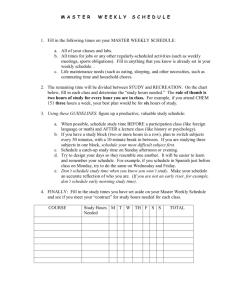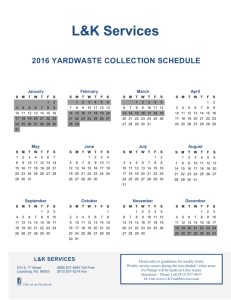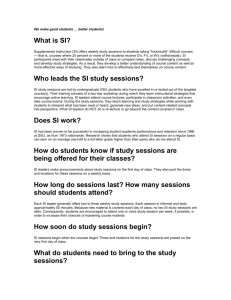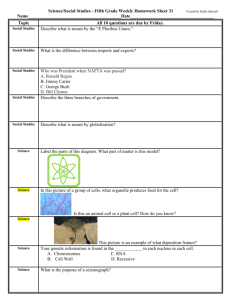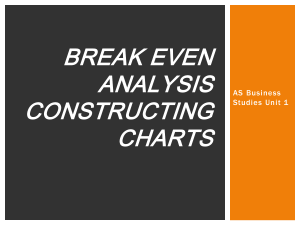Training - todaysupdates
advertisement
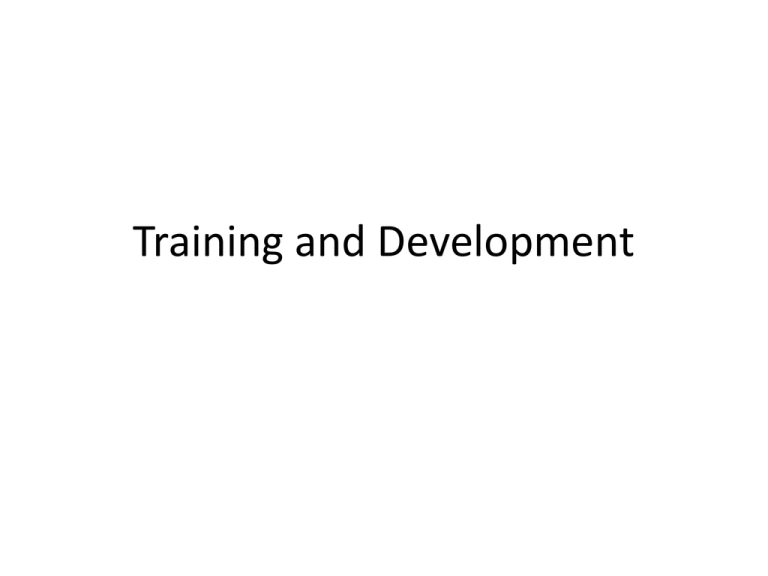
Training and Development Introduction Training: consists of an organization’s planned efforts to help employees learn job-related knowledge, skills, abilities, and behaviors, with the goal of applying these on the job. A training program may range from formal classes to one-onone mentoring and it may take place on the job or at remote locations. No matter what its form, training can benefit the organization when it is linked to organizational needs and when it motivates employees. Think about it • Your sales director complains that her representatives are not making their monthly quotas. She is convinced they need more sales training to address this issue and asks you to design something by the end of the week. • What would you do? Think about it • How do you determine the exact cause of the sales representatives’ failure to meet their sales quota and whether training is the answer? • Process: 1. Conduct a performance analysis; desired vs. actual employee performance. What is the difference in current vs. desired performance? 2. Conduct a training needs assessment (TNA) to determine if training is the most appropriate intervention. How can the performance gap most effectively be eliminated? Needs Assessment • A TNA is the process to determine whether training is necessary to address a performance gap. • Training might be appropriate when the performance issue is a “can’t do” issue: – – – – – – – Poor performance (resulting from a knowledge or skill deficiency). Lack of basic skills (reading, writing, technology, math skills). Legislation or policies requiring new knowledge or skills. New technology. A customer request for new products or services. Higher performance standards. New jobs. Needs Assessment Needs assessment: the process of evaluating the organization, individual employee, and employee’s tasks to determine what kinds of training, if any, are necessary. A variety of conditions may prompt an organization to conduct a needs assessment: Management observes that some employees lack basic skills or are performing poorly The organization has decided to produce new products, apply new technology, or design new jobs Outside forces such as customer requests or legal requirements The outcome of the needs assessment is a set of decisions about how to address the issues that prompted the needs assessment. Needs Assessment Organization Analysis • Conducting an organization analysis ensures that the organization is supportive and on board with the training initiative. The alignment of training to the business strategy, the support by stakeholders (mostly managers and peers) and the resources available (mostly money) are the main issues sought in an organization analysis. • Senior and mid-level managers are usually the focus of this inquiry because they make decisions on strategic planning and training budget allocations. • If there is low interest or support for training, then another performance intervention might be better. Training is one of the more costly interventions, so before any work is done on training design, it is essential that the organization agrees to support the training design, development, implementation and evaluation. Task Analysis • A task analysis focuses on the specific responsibilities of the job. Understanding what employees need to accomplish in their job is important to understanding how training can help address a performance problem. • As mentioned previously, there is not an implicit order when completing a task or learner analysis. Often, these are completed simultaneously or in the reverse order (person then task analysis). • Data is typically gathered from people who have direct knowledge of the work tasks and responsibilities and the expected level of performance. Person Analysis The person/learner analysis involves: – Determining whether performance deficiencies result from a lack of knowledge, skill, behavior or ability (a training issue) or from a motivational or work design problem. – Identifying who needs the training; who has a KSBA deficiency. – Determining readiness for training: basic skills, motivation, self-efficacy. – Data sources include learners, managers and document reviews (personnel records, prior training records, or testing). Development Employee development is the combination of formal education, job experience, relationships, and assessment of personality and abilities to help employees prepare for the future of their careers. Human resource management establishes a process for employee development that prepares employees to help the organization meet its goals. Development The definition of development indicates that it is future oriented. Development: Prepares employees for other positions Increases employees’ ability to move into jobs that may not yet exist Helps employees prepare for changes in current jobs Training traditionally focuses on helping employees improve performance of their current jobs. Training and Development Methods On the job Methods 1. Apprentice 2. Job Rotation 1. Apprentice Apprenticeship is a formal agreement between an individual who wants to learn a skill and an employee who needs a skilled worker. Training occurs under the supervision of an experienced person, an apprentice receives knowledge and develops skills associated with a designed trade through on the job training. 2. Job Rotation It involves the movement of employees through a range of jobs in order to increase interest and motivation. It improves multi skilling. It helps the organization to increase its productivity and competitiveness increases. Also employees experience personal growth through up skilling. Training and Development Methods Off the job Methods 1. Lecture 2. Small Group Activity 3. Case Studies 4. Business Games 5. Role Plays 6. Vestibule Training 7. Programmed Instructions 8. In-basket Exercise 9. Sensitivity Training 1. Lecture Here the instructor is the sole disseminator of information. He presents information to the learners systematically. It is an oral presentation in which the trainer or other speaker presents facts, opinion, events, principles or explanations. 2. Small Group Activity It is based on the principle that adults learn best by doing. The approach places the learners in a series of carefully constructed problem solving or discovery situations where they are asked as a group to apply their own experiences combined with information and resources provided in the training to solving problems that are relevant to their day to day experiences. 3. Case Studies Case studies are descriptions of a real life experience, related to the field of study or training which are used to make points, raise issues or otherwise enhance the participants understanding and learning experience. 4. Business Games It is an exercise in which competition or cooperation is used to illustrate or practice principles. Usually intended to be fun, games incorporate rules, decisions and time pressure. It may have hidden agendas or purposes which are revealed after the game is complete. 5. Role Plays Role plays are dynamic process that involves participants assuming specified roles and acting out significantly. It encourages thinking and creativity, lets participants develop and practice new language and behavioral skills in a relatively non threatening settings and can create the motivation and involvement necessary for learning to occur. 6. Vestibule Training Vestibule is a classroom which is as close as conditions of the department in which the employees will work, furnished with the same machines as used in production. There are normally 6 to 10 trainees per trainer. 7. Programmed Instructions Programmed Instructions are self study programmes, usually printed, comprised of instructional material divided up into small segments. Participants complete a series of questions, answers are immediately provided. This method is used for remedial and make up learning, highly motivated and geographically distant learners. 8. In-basket Exercise It assesses a participants' ability to perform a management job from an administrative perspective. In the exercise, the participant is confronted with the issues, problems and complexity of managerial life in the form of documents such as memos, reports, letters and other correspondence accumulated in the basket. The participants task is to take action on these varied issues and problems. These action are then evaluated in terms of planning, delegation and integration. 9. Sensitivity Training It attempts to change individual behavior by placing participants in an unstructured, ambiguous situation and having them resolve the conflicts, which emerge as a result of ambiguity through interpersonal interactions. In this process, participants examine their individual and collective interpersonal relations and develop an understanding of the dynamics of group interaction and functioning. Measuring Results of Training Measures of training success include: Trainee satisfaction with the program Knowledge or abilities learned Use of new skills and behaviors on the job Improvements in individual performance Improvements in organizational performance Kirkpatrick Model of Evaluation of Training • • • • Reaction Learning Behaviour Result BACK TO LUCY’S TRAINING AND DEVELOPING EMPLOYEES SCHEDULING EXERCISE: •It has become apparent at Lucy's Restaurant that because of turnover and to improve the service and operational efficiency the nine employees (and their replacements when they leave) need more skill and ability. •You must now determine what training each person needs and schedule it so that it has the least interference on the operations of the restaurant while they are working. TRAINING SCHEDULE POSITION Training 1 Safety When? How? Where? Training 2 Diversity/ sexual harassment When? How? Where? Training 3 ___________ ___________ Training 4 ___________ ___________ Training 5 ___________ ___________ Frequency of all training for this position When? How? Where? When? How? Where? When? How? Where? Weekly Monthly annual ** WHEN = What time or period of day or week that the training will occur. ** HOW = How the training will be delivered / occur. ** WHERE = at LUCY’; somewhere else? TRAINING AND DEVELOPING EMPLOYEES: TRAINING SCHEDULE POSITION •It has become apparent at Lucy's Restaurant that because of turnover and to improve the service and operational efficiency the nine employees (and their replacements when they leave) need more skill and ability. •You must now determine what training each person needs and schedule it so that it has the least interference on the operations of the restaurant while they are working. Training 1 Safety Training 2 Diversity/ sexual harassment Training 3 ___________ ___________ Training 4 ___________ ___________ Training 5 ___________ ___________ Frequency of all training for this position Cooks When? How? Where? When? How? Where? When? How? Where? When? How? Where? When? How? Where? Weekly Monthly annual Wait Staff When? How? Where? When? How? Where? When? How? Where? When? How? Where? When? How? Where? Weekly Monthly annual Manageme nt When? How? Where? When? How? Where? When? How? Where? When? How? Where? When? How? Where? Weekly Monthly annual Bar? When? How? Where? When? How? Where? When? How? Where? When? How? Where? When? How? Where? Weekly Monthly annual Bussing When? How? Where? When? How? Where? When? How? Where? When? How? Where? When? How? Where? Weekly Monthly annual Other? When? How? Where? When? How? Where? When? How? Where? When? How? Where? When? How? Where? Weekly Monthly annual ** WHEN = What time or period of day or week that the training will occur. ** HOW = How the training will be delivered / occur. WHERE = at LUCY’; somewhere else? EMPLOYEE TRAINING SCHEDULE Training 1 Safety POSITION Training 2 Diversity/ sexual harassment Training 3 ___________ ___________ Training 4 ___________ ___________ Training 5 ___________ ___________ Frequency of all training for this position Cooks When? How? Where? When? How? Where? When? How? Where? When? How? Where? When? How? Where? Weekly Monthly annual Wait Staff When? How? Where? When? How? Where? When? How? Where? When? How? Where? When? How? Where? Weekly Monthly annual Management When? How? Where? When? How? Where? When? How? Where? When? How? Where? When? How? Where? Weekly Monthly annual Bar? When? How? Where? When? How? Where? When? How? Where? When? How? Where? When? How? Where? Weekly Monthly annual Bussing When? How? Where? When? How? Where? When? How? Where? When? How? Where? When? How? Where? Weekly Monthly annual Other? When? How? Where? When? How? Where? When? How? Where? When? How? Where? When? How? Where? Weekly Monthly annual ** WHEN = What time or period of day or week that the training will occur. ** HOW = How the training will be delivered / occur. WHERE = at LUCY’; somewhere else?
